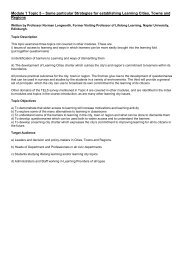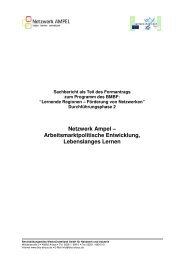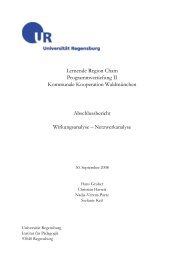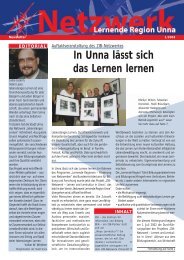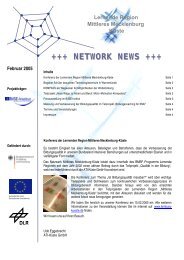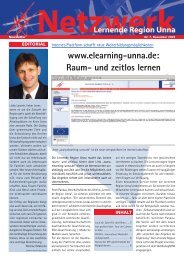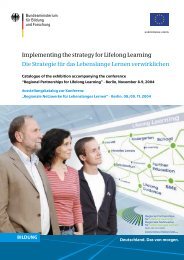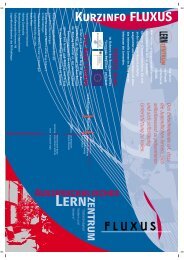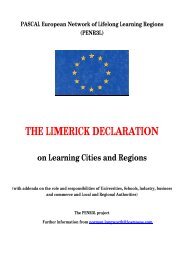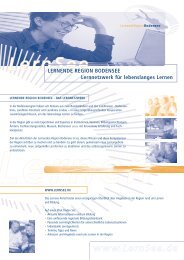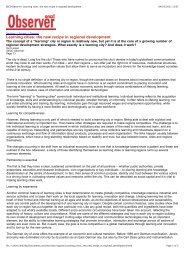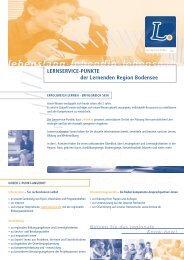SWOT-analysis as a basis for regional strategies - EUROlocal
SWOT-analysis as a basis for regional strategies - EUROlocal
SWOT-analysis as a basis for regional strategies - EUROlocal
You also want an ePaper? Increase the reach of your titles
YUMPU automatically turns print PDFs into web optimized ePapers that Google loves.
with an open-ended set of stakeholders, we seem to run into serious problems. Now<br />
the boundary between organisation and environment becomes necessarily blurred. In<br />
some instance a given actor may be part of the implementation organisation; in other<br />
instances it clearly is a part of the environment. It can be particularly difficult to avoid<br />
problems of indistinct boundaries in a situation where inter-organisational projects<br />
criss-cross the effective boundaries of what may be in themselves well-defined<br />
organisations.<br />
Nowhere, it can be maintained, is this so obvious <strong>as</strong> in the field of processes related to<br />
<strong>regional</strong> development. The re<strong>as</strong>ons to this are also obvious: small budgets, shared<br />
financial burdens among various actors (both public and private), and actors with<br />
overlapping responsibilities and/or administrative territories. Yet, it is due to these<br />
very factors that <strong>regional</strong> development h<strong>as</strong> been made a deliberately programmed<br />
process, utilising one of the most typical tools of strategic planning and management,<br />
the <strong>SWOT</strong>. There is, we argue, a major contradiction here.<br />
To elaborate the contradiction we need to return to the organisation/environment<br />
scheme, replacing the single organisation with a network of organisations. The setting<br />
grows much more complicated (cf. Figure 4). If we start with the in<strong>for</strong>mation flows<br />
from the environment through the <strong>analysis</strong> to the internal structure of the<br />
programming organisation, we soon find that there is no single organisation that that<br />
would be in charge of adapting its internal structure to the pressures from the<br />
environment. In addition, there is no single organisation whose internal structural<br />
adjustments would suffice in turning weaknesses to strengths or combatting the<br />
looming threats by utilising the overwhelming opportunities. Instead, there is a web of<br />
actors, each of which is supposed to do its share in the joint endeavour of developing<br />
the region.<br />
Figure 4. Environment-related in<strong>for</strong>mation channelled to the web of actors<br />
This multitude of actors h<strong>as</strong> a major effect on the programming process. We may<br />
<strong>as</strong>sume that there will always be one key organisation, which will <strong>for</strong> the sake of<br />
simplicity be called the <strong>regional</strong> development authority (RDA), putting together the<br />
physical document, the programme. This is produced in co-operation with other<br />
actors, both <strong>regional</strong> administrative (sector) authorities (RAA) and <strong>regional</strong><br />
stakeholder groups (RSG). Together these actors <strong>for</strong>m a <strong>regional</strong> programming and<br />
development partnership.<br />
The whole programme, <strong>as</strong> well <strong>as</strong> its analytical parts, is necessarily a crude<br />
compromise. The various members of a partnership read the developmental trends of<br />
29



